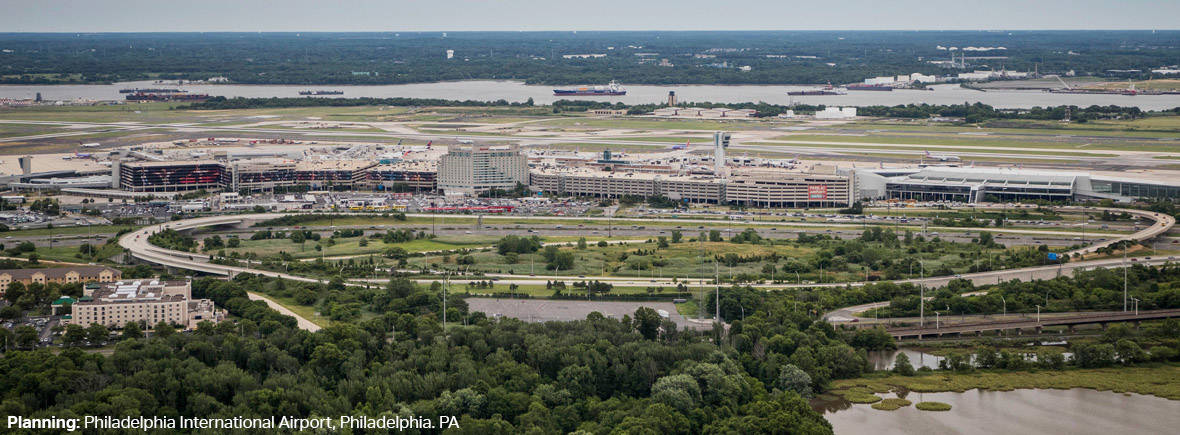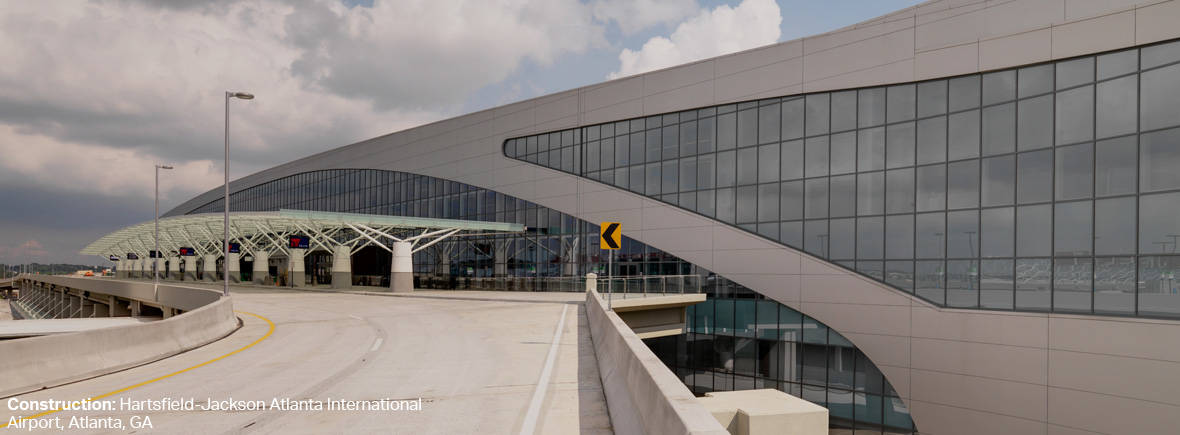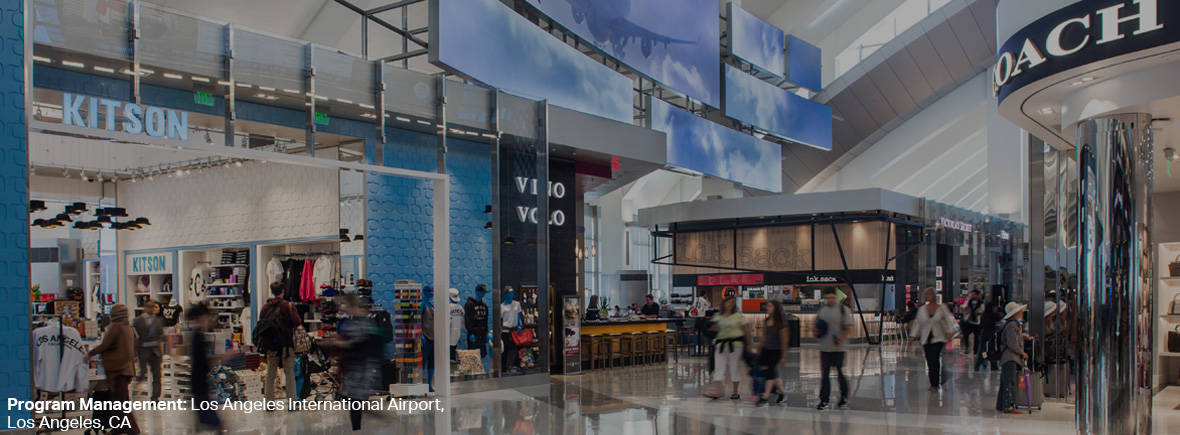Airports across North America are grappling to accommodate growth in passenger and cargo activity, rehabilitate existing infrastructure, maintain a state of good repair, and keep airports up to standards for the aircraft that use them. All without disrupting services to passengers and the flights they count on.
We understand. We put our extensive planning, design, program management and construction experience to work for you. Our experts collaborate across disciplines and boundaries, providing 360 degree solutions that will help your aviation projects take off and keep climbing.
Planning: We work at the country’s busiest airports and have learned firsthand that the best ways to solve airport extension and improvement program challenges are to anticipate them during planning and design.
Fast track development and construction at Philadelphia International Airport brought our vision, coordination and creative problem-solving capabilities together as we advanced the $550 million International Terminal A-West, which opened in April 2003 and the $100 million Terminal F commuter terminal, the first of its kind planned and designed to accommodate the new generation aircraft operated by the regional airlines. Completed in an extremely constrained space, the project incorporated 50 aircraft gates, developed nearly 1 million square feet and included $100 million in interstate highway access ramps.
Design: We use our extensive airport and design experience, developing work phasing and sequencing that minimizes construction impacts on airports and airline operations. We seek out input from the start, keeping stakeholders apprised as projects develop delivering projects that meet expectations and needs.
Our experience and capabilities inspires confidence – and makes us a first choice for further aviation projects. We provided design and resident inspection services, for the 200,000-square-foot Terminal B renovation at Boston’s Logan International Airport. The project consolidated United and Continental Airlines’ operations and features 10 gates, new ticketing and baggage claim areas, a new passenger security checkpoint, and baggage handling system. And we’ll be continuing our efforts with the new Terminal E extension. Weaving together old and new the extension will provide the airport with new parking facilities, modernized security, noise, emissions, central plant systems circulation and will also integrate the airport into the local transportation network.
Construction: Our wholly-owned subsidiaries AECOM Hunt/Tishman build airport projects – and have done so for more than 50 years – so we have firsthand knowledge about managing large, complex construction projects.
We’ve built projects at some of the world’s busiest airports, including the Maynard H. Jackson Jr. International Terminal at Hartsfield-Jackson Atlanta International Airport. Completed in May 2012, three months early and $82 million under budget, this joint venture project included new gates, a new baggage handling system, parking structure, elevated roadways and renovations to Concourse E. The emphasis on water and energy conservation and carbon footprint reduction, enabled it to receive LEED gold certification. The terminal’s state of the art equipment and security systems, enables it to accommodate a surge of international travelers over the next decade.
Program Management: Our integrated teams partner with you using our extensive experience on aviation projects to look out for your best interests across all project phases. We work with you to guide you through the project lifecycle including such critical aspects as standing up, operating and ramping down large aviation projects.
With more than 66 million passengers per year, Los Angeles International Airport (LAX) is known as the gateway to the world. And our work as program manager is helping the airport maintain this reputation. We’re overseeing and implementing the LAX modernization plan. This comprehensive master plan calls for the design and phased construction that modernizes every aspect of the airport yet doesn’t interrupt passenger service at the transportation hub. The multi-phased plan establishes a unified, sustainable front door to Los Angeles exemplifying the ability of design to strengthen the existing urban fabric and enhance quality of life.
When O’Hare International Airport, the world’s second busiest airport, needed to modernize its runways, the Chicago Department of Aviation called on our firm for help. As the managing partner of a joint venture we partnered with and served as an extension of the department staff. Under the two-phased O’Hare modernization program, we reconfigured the airport’s intersecting runways into a more modern, parallel layout that increased efficiency and capacity while reducing delays especially during poor weather.






